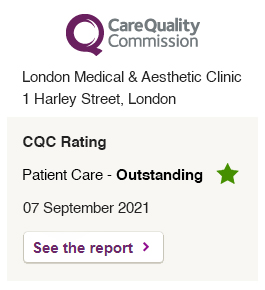Preparing for Breast Augmentation
Breast augmentation is a highly individualized procedure and you should do it for yourself, not to fulfil someone else’s desires or to try to fit any sort of ideal image.
Breast augmentation may be a good option if the patient is:
Physically healthy
Have realistic expectations
Have fully developed breasts
Bothered by the feeling that the breasts are too small
Dissatisfied with the breasts losing shape and volume after pregnancy, weight loss, or with aging
Breasts vary in size or shape
One or both breasts failed to develop normally
Prior to your breast augmentation your surgeon will:
- Evaluate your general health status and any pre-existing health conditions or risk factors
- Examine your breasts, and may take detailed measurements of their size and shape, skin quality, placement of your nipples
- Take photographs for your medical record
- Discuss your options and recommend a course of treatment
- Discuss likely outcomes of breast augmentation surgery and any risks or potential complications
- Discuss the use of anaesthesia during your breast augmentation procedure
Following this your surgeon will discuss with you:
- What to do on the day of surgery
- Post-operative care and follow-up
- Breast implant registry documents (when necessary)
Your plastic surgeon will also discuss where your procedure will be performed. Breast augmentation surgery may be performed in an accredited surgical center or a hospital.
Your breast augmentation is performed on the hospital, be sure to arrange for someone to drive you to and from surgery and to stay with you for at least the first night following surgery.
Prior to breast surgery, your plastic surgeon may ask you to:
- Get lab testing or a medical evaluation
- Take certain medications or adjust your current medications
- Get a baseline mammogram before surgery and another one after surgery to help detect any future changes in your breast tissue
- Stop smoking well in advance of your breast augmentation surgery
- Avoid taking aspirin, anti-inflammatory drugs and herbal supplements as they can increase bleeding
Step by step Surgery
Step 1 – Anaesthesia
Medications are administered for your comfort during breast augmentation surgery. The choices include intravenous sedation and general anaesthesia. Your surgeon will recommend the best choice for you.
Step 2 – The incision
Incisions are made in inconspicuous areas to minimize visible scarring. You and your plastic surgeon will discuss which incision options are appropriate for your desired outcome. Incision options include:
- Inframammary incision
- Transaxillary incision
- Periareolar incision
Incisions vary based on the type of implant, degree of enlargement desired, your particular anatomy, and patient-surgeon preference.
Step 3 – Implant choice: silicone breast implants or saline breast implants?
Breast size and shape are important, so be honest and open about your expectations when talking with your surgeon.
Implant type and size will be determined not just on your desired increase in size but more importantly on your breast anatomy, skin elasticity and body type.
Recovery
Following your surgeon’s instructions is of utmost importance to the success of your surgery. It is important that the surgical incisions are not subjected to excessive force, abrasion, or motion during the time of healing. Your surgeon will give you specific instructions on how to care for yourself.
If you experience shortness of breath, chest pains, or unusual heart beats, seek medical attention immediately. Should any of these complications occur after breast augmentation, you may require hospitalization and additional treatment.
The practice of medicine and surgery is not an exact science. Although good results are expected, there is no guarantee. In some situations, it may not be possible to achieve optimal results with a single surgical procedure and another surgery may be necessary.
Although many factors are involved with determining your actual recovery time for breast augmentation, you will likely experience a post-surgical recovery period of 24 to 48 hours and an additional reduced-activity period of a few days, you will likely experience soreness and swelling for a few weeks.
Exercise and normal activity can resume at the direction of your plastic surgeon. Over time, post-surgical swelling will decrease and incision lines will fade.
You will be given specific instructions that may include: How to care for your breasts following breast augmentation surgery, medications to apply or take orally to aid healing and reduce the risk of infection, and when to follow-up with your plastic surgeon.
Be sure to ask your plastic surgeon specific questions about what you can expect during your individual recovery period.
- Where will I be taken after my surgery is complete?
- What medication will I be given or prescribed after surgery?
- Will I have dressings/bandages after surgery? and When will they be removed?
- Are stitches removed? When?
- When can I resume normal activity and exercise?
- When do I return for follow-up care?
Results
The results of your breast augmentation surgery will be long-lasting. You will find it easier to wear certain styles of clothing and swim wear.
Like many women who have had breast augmentation, you may also have a boost in self confidence.
Implants may need to be replaced or revised in future years to maintain the desired results.
It is important to know that after receiving breast implants, results are not permanent and they may require replacement during your lifetime. You should expect to have future visits with your plastic surgeon to discuss changes in your breasts.
Over time, your breasts can change due to aging, weight fluctuations, hormonal factors and gravity. If, after a period of years, you become dissatisfied with the appearance of your breasts, you may choose to undergo a breast lift or implant exchange to restore a more youthful contour.
Continue to follow your plastic surgeon’s instructions to ensure the best results for breast enlargement or breast enhancement, and attend follow-up visits as scheduled.














































